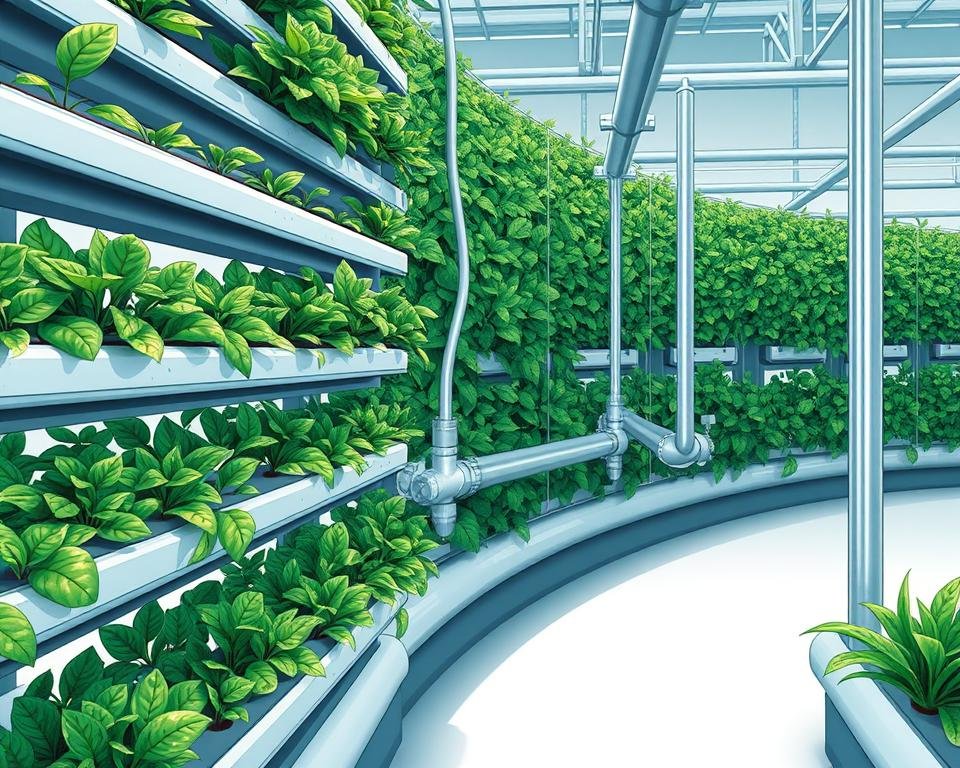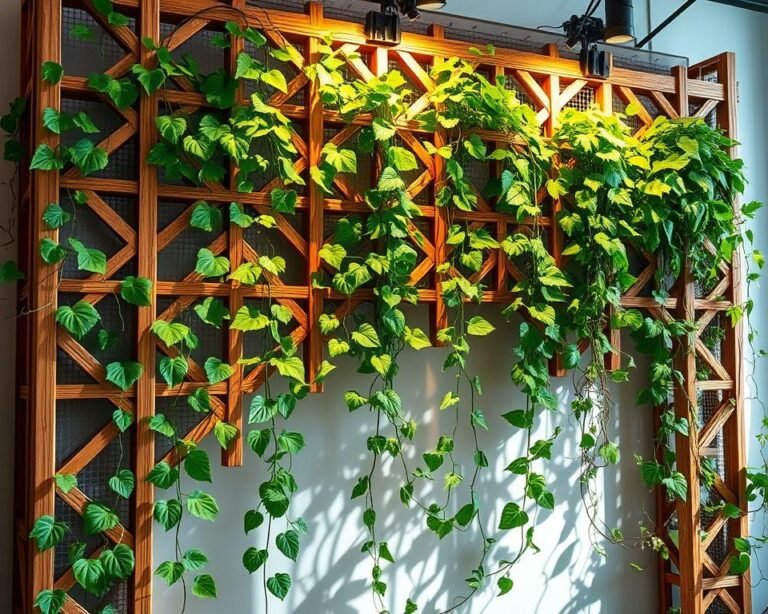Automated Irrigation Solutions for Your Vertical Garden
Ever looked at your vertical garden and wondered how to keep it watered without always doing it yourself? Smart watering systems have changed how we care for our plants. They make automated irrigation a must-have for gardening.
Vertical gardens face challenges that regular gardening doesn’t solve. With the right irrigation, you can have a lush, green space with little daily work. Automated irrigation isn’t just easy—it ensures your plants get the right amount of water to grow well.
Whether you’re always on the go or love gardening, smart watering systems are a big help. They save water, reduce plant stress, and let you enjoy your garden more.
Key Takeaways
- Automated irrigation systems can save up to 70% water compared to traditional methods
- Consistent watering increases plant growth by 20-30%
- Smart systems reduce plant stress and disease by 50%
- Vertical gardens require specialized irrigation techniques
- Technology enables precise nutrient and moisture control
Understanding Vertical Garden Irrigation Basics
Vertical gardening has changed urban growing spaces, making sustainable farming possible in small areas. It’s key to have a good irrigation system for healthy plants and saving water.
Each vertical garden system needs its own water management plan. Your irrigation strategy should think about the plants, garden size, and weather. This ensures your plants grow well.
Types of Vertical Garden Systems
- Wall-mounted pocket systems
- Hydroponic vertical towers
- Hanging basket configurations
- Modular grid structures
Water Requirements for Vertical Gardens
Water needs change a lot in different vertical gardens. Drip irrigation can cut water waste by 70% compared to old ways of watering.
| Garden Type | Water Needs | Irrigation Method |
|---|---|---|
| Herb Gardens | Low | Targeted Drip |
| Vegetable Towers | Medium | Soaker Hose |
| Tropical Displays | High | Misting System |
Benefits of Automated Watering
Automated irrigation systems are a big help for city gardeners. They cut down watering time by 50-75% and keep the right moisture for plants.
“Irrigation automation transforms gardening from a time-consuming task to an effortless, efficient process.” – Urban Gardening Expert
Smart water saving solutions make gardening easy and sustainable. Your vertical garden will get the right moisture, stay healthy, and use less water.
Essential Components of Automated Irrigation
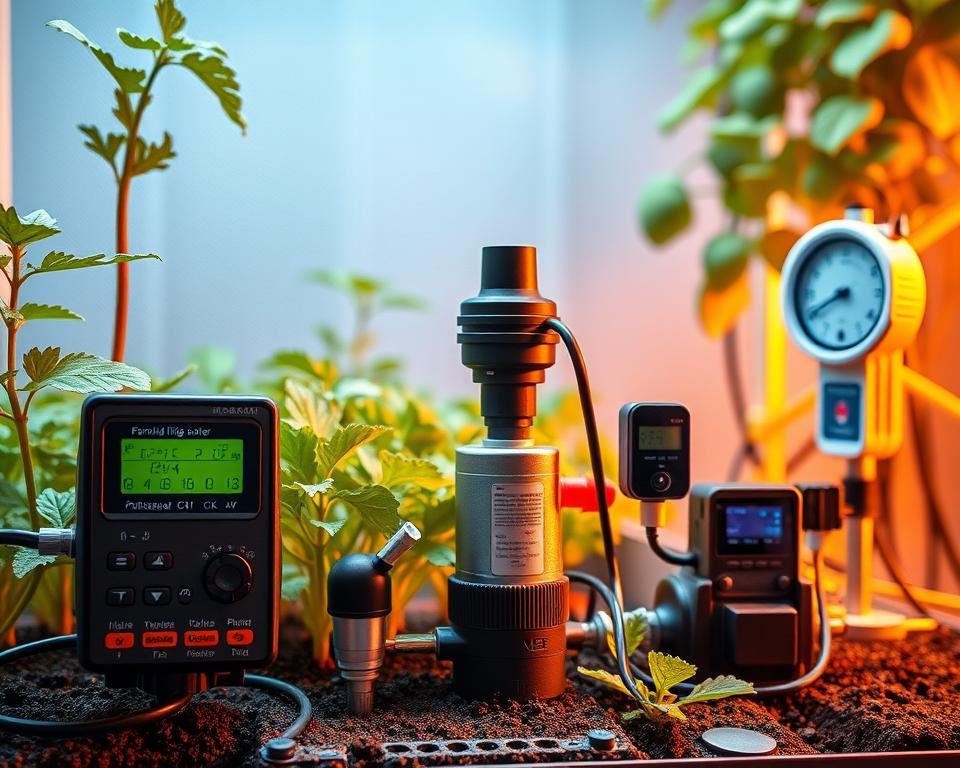
To create a smart irrigation system for your vertical garden, you need to know the key parts. These parts make watering plants efficient and accurate. Smart irrigation systems have changed how we care for plants, bringing technology right to our gardens.
The heart of an IoT-enabled irrigation system includes several important parts:
- Water solenoid valve: Controls water flow automatically
- Pressure regulator: Keeps water pressure steady
- Irrigation controller: Manages when to water
- Specialized piping: Connects all parts together
Sensor-based irrigation has changed how we water plants. It uses smart devices to cut water use by up to 50% compared to manual watering. Automated systems make sure plants get just the right amount of water.
“Technology transforms gardening from guesswork to precision” – Modern Agriculture Expert
Today’s irrigation systems use advanced sensors to check soil moisture, temperature, and more. These smart tools can spot small changes, watering plants only when they really need it. With savings of up to 90%, an automated system is not just easy—it’s also good for the planet.
DIY Installation Guide for Smart Watering Systems
Setting up a precision agriculture solution for your vertical garden needs careful planning. Your DIY irrigation system can change how you handle water and plant health.
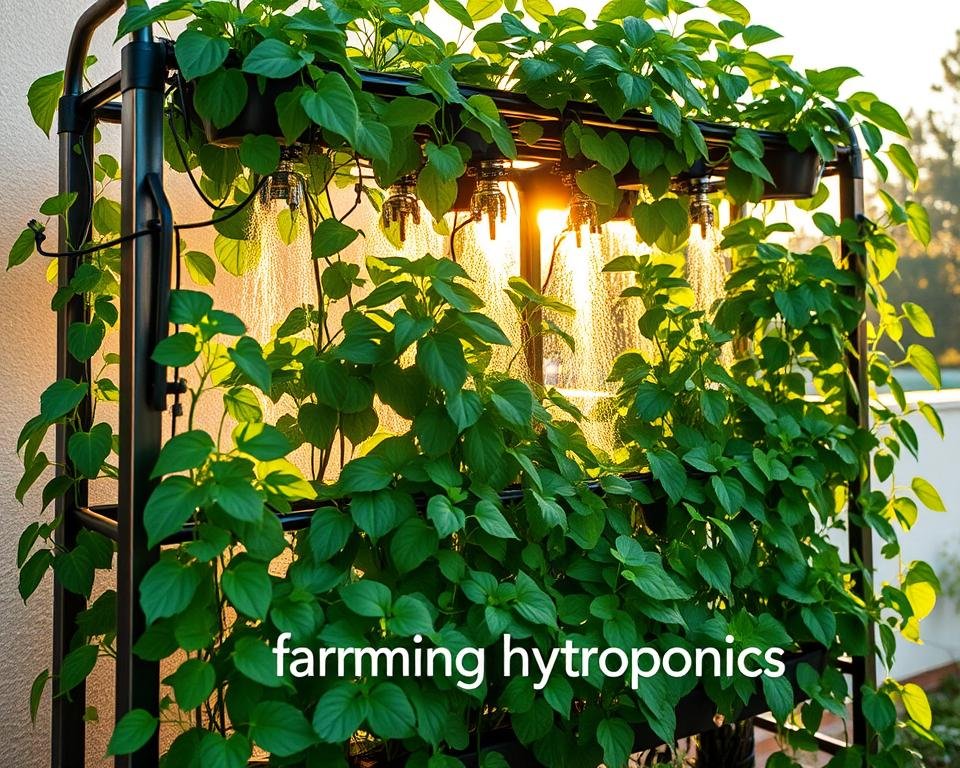
Creating an intelligent watering system involves several key steps. These steps will make your vertical garden work better and use less water.
Site Preparation Steps
Before you start, do these prep tasks:
- Measure your vertical garden’s dimensions precisely
- Identify optimal water source locations
- Check electrical connectivity for smart controllers
- Evaluate soil moisture conditions
System Assembly Instructions
Your DIY irrigation setup needs specific parts for success:
| Component | Cost | Function |
|---|---|---|
| Arduino Uno | $3.18 | Central control system |
| Moisture Sensor | $1.04 | Soil condition monitoring |
| Relay Module | $2.93 | Water flow management |
| Water Pump | $0.92 | Water distribution |
Controller Programming Basics
Smart controllers bring new precision to agriculture. Program your system to monitor multiple environmental conditions, ensuring optimal water usage.
“A properly functioning smart controller can save hundreds of gallons of water per day.” – EPA Water Efficiency Expert
Key programming considerations include:
- Set watering schedules based on plant types
- Configure moisture threshold triggers
- Integrate temperature and sunlight sensors
- Create custom zone-specific irrigation patterns
By using these DIY systems, you’ll save a lot of water. Drip irrigation can save up to 80% more water than old methods. This makes your vertical garden both green and efficient.
Water Management Technology and Control Features
Water management technology has changed how we water vertical gardens. Modern irrigation software lets you control your garden’s water needs. This makes saving water smart and effective.
Smart irrigation systems use new tech to save water. AI can cut water use by up to 50%. This changes how gardeners and farmers use resources.
- Real-time soil moisture monitoring
- Weather-responsive scheduling
- Remote control capabilities
- Precision water delivery
Advanced water management tech has big benefits:
- Enhanced water efficiency through precise measurement
- Automatic adjustments based on environmental conditions
- Reduced water waste
- Improved plant health and growth
“Smart irrigation is not just about watering plants, it’s about intelligent resource management.” – Agricultural Technology Experts
Your irrigation software can use many sensors and data. It creates a detailed watering plan. It looks at soil moisture, temperature, and weather to make sure your garden gets what it needs.
| Technology Feature | Water Savings Potential |
|---|---|
| Moisture Sensors | 15-20% reduction |
| Weather-Based Scheduling | 20-40% reduction |
| Automated Valves | 25% improved efficiency |
As tech gets better, water management solutions are easier to use. Getting smart irrigation means you’re helping the planet.
Maintenance and Troubleshooting Best Practices
To keep your smart irrigation systems working well, you need to pay attention and take care of them regularly. This care is key to saving water and making your vertical garden last longer.
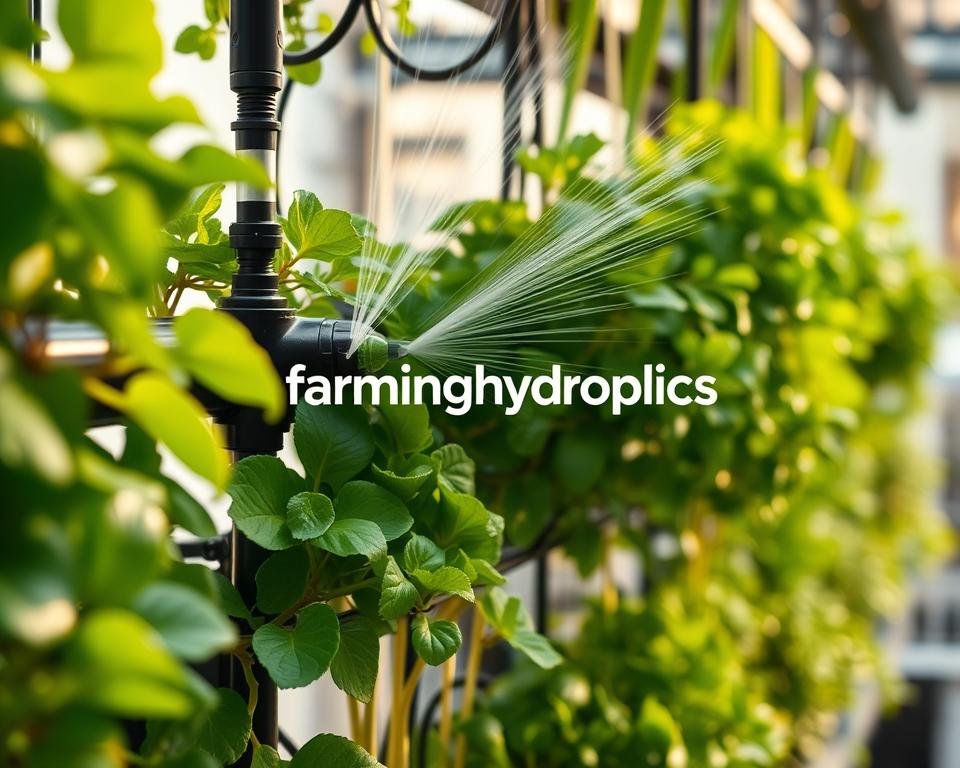
Regular System Checks
Regular checks on your irrigation system can save you money and help you use water wisely. Here are some important steps to follow:
- Inspect system components monthly
- Check for leaks and blockages
- Verify controller settings
- Clean filters and nozzles
Common Issues and Solutions
Smart irrigation systems can face different problems. Here’s a list of common issues and how to fix them:
| Issue | Solution | Estimated Repair Cost |
|---|---|---|
| Minor Leaks | Seal connections | $75-$250 |
| Valve Malfunction | Replace damaged components | $250-$600 |
| Electrical Problems | Check controller/wiring | $600+ |
Seasonal Adjustments
Adjusting your smart irrigation systems with the seasons helps save water:
- Spring: System inspection and cleaning
- Summer: Intense monitoring and leak prevention
- Fall: System flushing and preparation
- Winter: Drainage and protective measures
“Proper maintenance can reduce water consumption by up to 50% and extend your system’s lifespan by decades.”
By sticking to these maintenance tips, you’ll keep your investment safe and help with sustainable water use in your vertical garden.
Conclusion
Your journey into vertical gardening gets a boost with automated irrigation technology. Smart watering systems cut water use by 15-40% and boost plant health. Advanced irrigation solutions deliver water exactly where it’s needed, saving resources.
Automated irrigation makes sustainable farming easier. These systems make caring for your vertical garden simpler and save you money. You’ll spend less on labor and more on enjoying your garden.
Automated irrigation for vertical gardens is a smart choice. It saves energy and cuts costs. By using these systems, you’re part of a movement towards greener gardening.
Your vertical garden can be a model of efficiency and care. Modern irrigation keeps soil moist and plants healthy with little effort. Adopt these technologies to make your garden better and help the planet.

